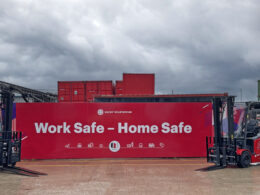The evolution of the High Street and the boom in Ecommerce has had a significant impact on our infrastructure. As a result, the logistics industry in the UK is now facing a new crisis; a lack of modern and fit-for-purpose warehousing space to manage supply and demand.
The fact of the matter is that retail has truly embraced digital – it’s now being fuelled by it, but almost to its detriment. Consumer demands and expectations have grown to such levels that free, one day delivery is now the norm, and this in itself is influencing how consumers choose to interact with brick-and-mortar stores. Instead of their traditional store-front role, they are now being used as customer service hubs, thereby shifting the stock balance back to warehousing, as retailers are simply not shifting the units they used to in-store.
To accommodate this change, retailers are snapping up every inch of square footage available, so they can meet e-tail demand. But this means they are under pressure to rethink their warehouse and logistics strategies, not only to meet the ever-growing demands of online shoppers but also to remain profitable. Below are some of the ways in which strategies are being adapted:
The rise of the 3PL
The need to contain costs had led to many retailers using Third Party Logistics (3PLs) to manage all or parts of their supply chain processes, as sharing space is far more cost effective. As well as providing rent-savings, using 3PLs to help support customer service, delivery and returns can also provide efficiency enhancements, as operations and networks are already refined and in place; thereby freeing up internal capacity.
Delivery direct from suppliers
An alternative to deploying large warehousing operations is utilising just-in-time stock management which mitigates cost and availability issues. JIT can help cut down the amount of stock held (and therefore the need for space) but is itself a risky approach. Problems like unmet orders become more common with no stock buffers to fall back, or unpredicted peaks in demand, which will have knock-on effects and in turn lead to additional costs.
Hyperlocal for added convenience
Part of the growth of Ecommerce has been driven by delivery and logistics, as faster and faster delivery times have been a way to win custom. This trend is already leading to the appearance of hyper-local warehouses. As consumers increasingly turn their backs on brick-and-mortar retail, high street stores will continue to close down – leaving room for small, local warehouses and distribution centres to appear in their place. In addition to being a storage space for extra stock, hyper-local warehouses allow stock to be situated within close proximity to the end-user. This means delivery can take place in record time, and retailers can better satisfy their customers by meeting their demands for next and same-day delivery. Hyper-local warehouses can also allow a more seamless experience to be offered to the consumer. For example, those who don’t want to wait in for a parcel could use this space to click-and-collect their order, at no extra cost to the supply chain, or it could double as a customer service hub.
Integrated warehouse management
While the front end of the retail experience is where many brands put their efforts, an integrated warehouse management system is vital in tying operations together. As retailers’ multi-channel operations become more complex and challenging to manage, problems with stock can manifest in customer delivery shortfalls. For those scaling up their digital operations, without the right warehouse and logistics operations in place, they are unable to manage inventory and delivery, and run into issues that Asos recently encountered. Having a real-time view of product availability will prevent disappointment and poor customer reviews, leading to a better retail experience and increased likelihood of customer retention – tying the whole process together.
In a world where digital is king, retailers and their logistics partners must adjust the way they use their warehouse according to price and efficiency demands. This means the supply chain may be forced to adapt – such as through the use of 3PLs. The evolution of the warehouse can enable faster delivery, and tie the back and front-end together by providing another touchpoint with the customer through cost-free click-and-collect opportunities – saving time, money and increasing engagement with the end-user. So, in this cost-conscious era, is it time that retailers readdress how they view the warehouse, and move away from simply using it as somewhere to store stock?
By Mel Tymm, Industry Principal, Maginus
Mel Tymm is Industry Principal for Order Management at Maginus. Based in Manchester, she is responsible for all pre-sale activity, as well as acting as the firm’s resident expert on Order Management. She has over 15 years’ experience in customer facing roles in the multi-channel retail and distribution sector, and is experienced in the full software implementation lifecycle from pre-sales to go-live. Mel has a proven track record in successful project implementation and management, and has developed successful methodologies for pre-sales management in the multi-channel software environment to ensure that the prospect’s requirements are fully understood and met by the software solutions.













